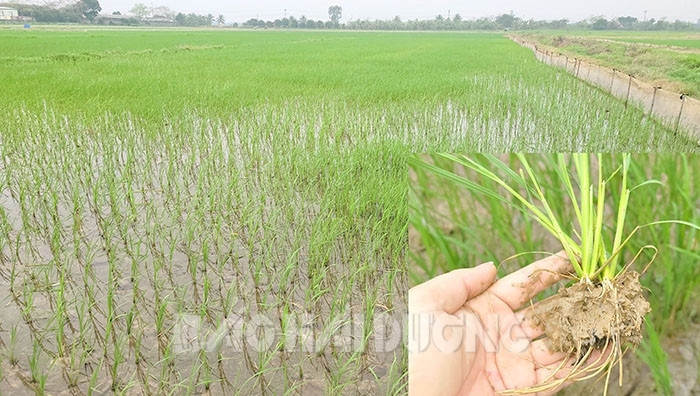According to the Department of Agriculture and Rural Development of Tu Ky district, by March 25, the entire winter-spring rice area that died and was affected by salinity had recovered and grown well.

Rice affected by salinity in Tu Ky district has taken root and turned green.
The district's professional agency has instructed farmers to use biological products to fertilize affected rice, increase weeding and mud aeration, and apply balanced first top dressing to help the rice tiller early and concentrate. The district also directed the district's Irrigation Works Exploitation Enterprise to regularly monitor the salinity intrusion situation in the communes downstream of the Thai Binh and Luoc rivers to have appropriate water regulation measures.
Previously, in late February and early March, more than 400 hectares of winter-spring rice in Tu Ky district were affected by salinity, of which 17 hectares of rice died. After determining the cause, Tu Ky district directed localities with rice affected by salinity to coordinate with the district's Irrigation Works Exploitation Enterprise to regulate surface water in the fields, remove acidity, wash away salinity, and promptly replant in areas where rice died.
HAI MINH
>>>17 hectares of winter-spring rice in Tu Ky died due to salinity